Shooting on KODAK 16mm, DP Autumn Durald Arkapaw ASC depicted dazzling performances for Gia Coppola's 'The Last Showgirl'
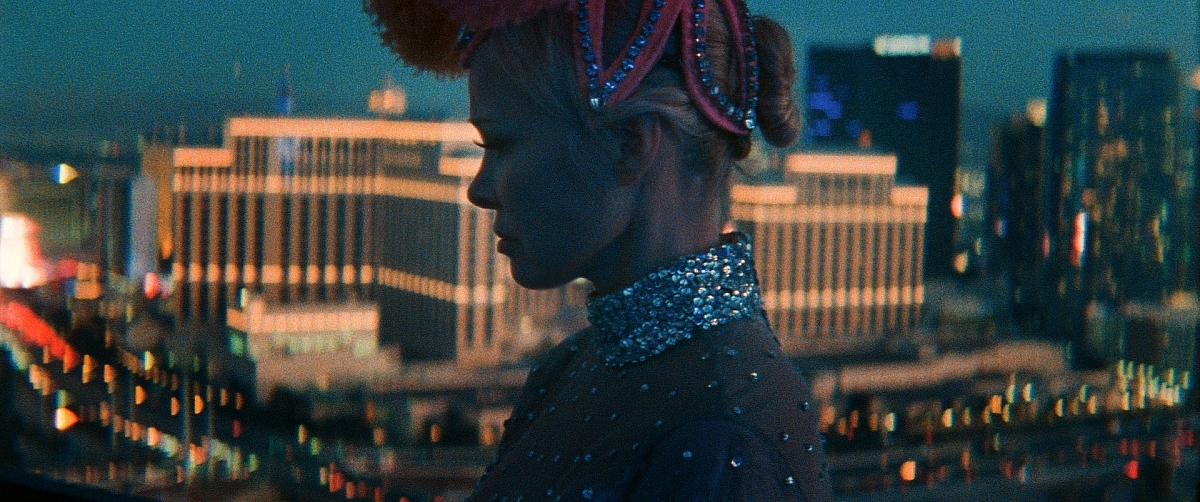
Pamela Anderson stars as Shelly in Gia Coppola's THE LAST SHOWGIRL.
Capturing on KODAK 16mm film, DP Autumn Durald Arkapaw ASC married bespoke lenses with a sensitive, handheld camera style to depict former glories and uncertain futures in director Gia Coppola's acclaimed The Last Showgirl.
The film stars Pamela Anderson as Shelly, a middle-aged Las Vegas showgirl who, bedecked in feathers and rhinestones, has performed with myopic dedication as a dancer in a casino revue called Le Razzle Dazzle for over 30 years.
However, with declining audiences seeking more explicit stage entertainment elsewhere, and new casino owners about to take over, the revue's producer Eddie (Dave Bautista) announces that the show is soon to be cancelled for good.
As the final curtain call approaches, and with counsel from Annette (Jamie Lee Curtis), a former showgirl with a gambling addition now scraping by as a cocktail waitress, the devastated Shelly must confront her fears and figure out what to do with her life. She also has to mend things with her grown-up, but semi-estranged daughter, Hannah, who Shelly gave to her sister to raise in order to focus on the glamor of being in showbiz.
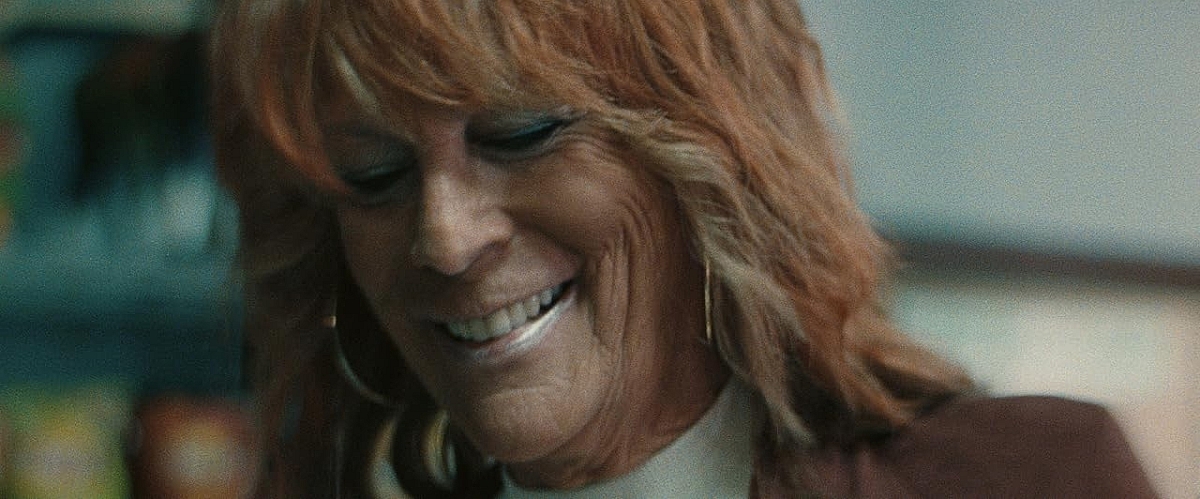
Jamie Lee Curtis as Annette in Gia Coppola's "The Last Showgirl."
Made for just $2M, The Last Showgirl became a long-burning sensation in cinemas globally, earning rave reviews for the vulnerability of Anderson's performance, the deft melancholic sweetness of Coppola direction, and Durald Arkapaw's evocative cinematography in reflecting poignant themes around family, friendships, motherhood, ageism and reinvention.
The Last Showgirl was written by Coppola's cousin, Kate Gersten, and adapted by Gersten from her theater production, Body of Work, itself based on the demise of Jubilee! a former
Las Vegas Strip-based revue, known for its elaborate costumes, sets and routines.
The film represents Durald Arkapaw's third feature film production with Coppola following the director's debut feature Palo Alto (2013) and the comedy drama Mainstream (2020). The pair also regularly collaborate on music videos, fashion films and commercials.
"Gia is one of my best friends, and we work really well together," says Durald Arkapaw, a graduate of the AFI, whose credits include the upcoming supernatural horror Sinners (2025.dir. Ryan Coogler), which she shot on KODAK 65mm film shortly after concluding on The Last Showgirl.
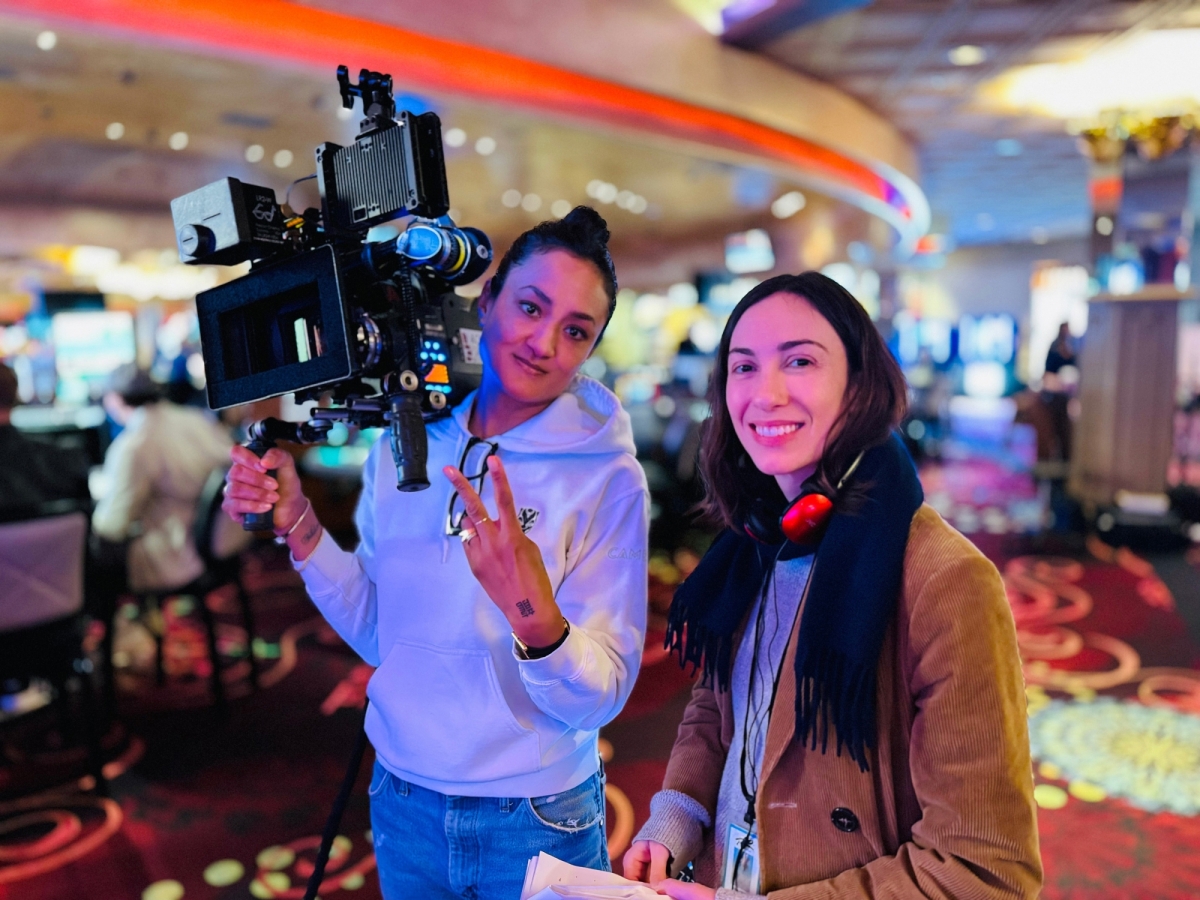
DP Autumn Durald Arkapaw ASC and Gia Coppola during production on "The Last Showgirl." Photo by Brian Bartolini.
"Over time and many productions, we've developed a shorthand together, where I inherently know the style of filmmaking Gia likes and have her trust when it comes to the framing and lighting to tell the story visually.
"After releasing Mainstream, she decided to make The Last Showgirl independently, so as to have complete creative control. And she wanted to shoot it on film. No on-set monitors, no video village, and very few distractions.
"Although she had not cast Pamela in the lead when she first told me about this production, I was excited by both the story and the idea of shooting a small-budget feature in Las Vegas, where we would be in charge of the creative vision. The fact that she wanted to film on 16mm, and to have its textural quality in the visuals, was another big draw for me."
When it came to discussing the look-and-feel of the film with Coppola, Durald Arkapaw recalls there were very few direct aesthetic references.
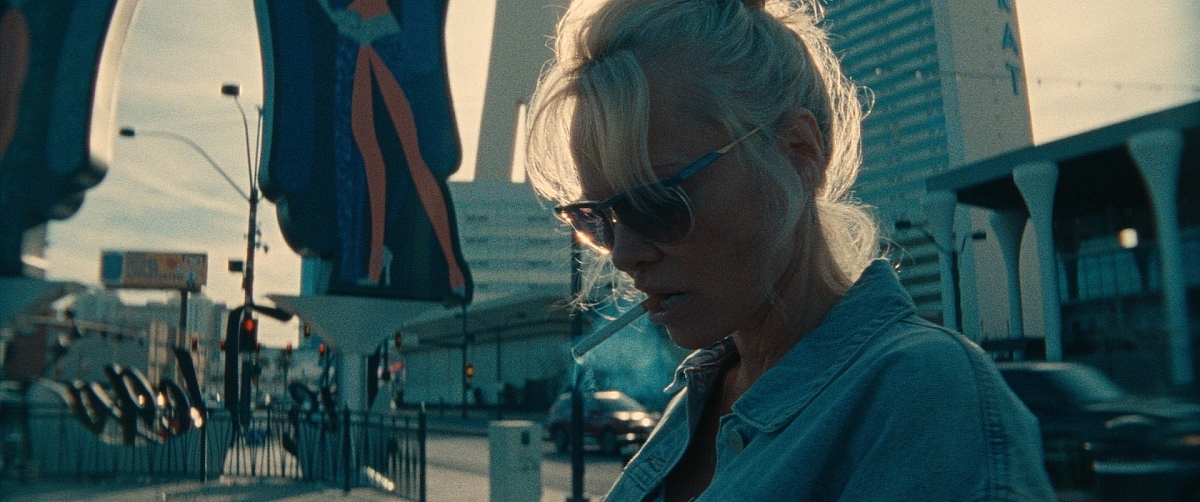
Pamela Anderson stars as Shelly in Gia Coppola's "The Last Showgirl."
"It was mainly intuition in the subject matter, our mutual taste and experience together," says the DP. "Gia gave me a lookbook containing still images of Las Vegas during bygone years, to give me an idea of the tone she wanted to create, and we continually discussed those images and added to them during pre-production and even during the shoot.
"I also know Gia has an affinity towards filmmakers like John Cassavetes, where there's an improvisational aesthetic and the focus is on real and raw relationships between characters. We always wanted to be with the women in this story, especially Shelly, and this meant having a certain close focus and fall-off, and employing a handheld camera to follow or respond to their emotions.
"But other than that, our considerations were more about adopting a softer palette and harnessing the feel of analog film to give the production a kind of dreamy nostalgia."
The DP also adds, "I have followed many wonderful actresses around with the camera. As a woman, I inherently understand how to interpret female beauty, aging and strength through the lens, so I don't really need references for that."
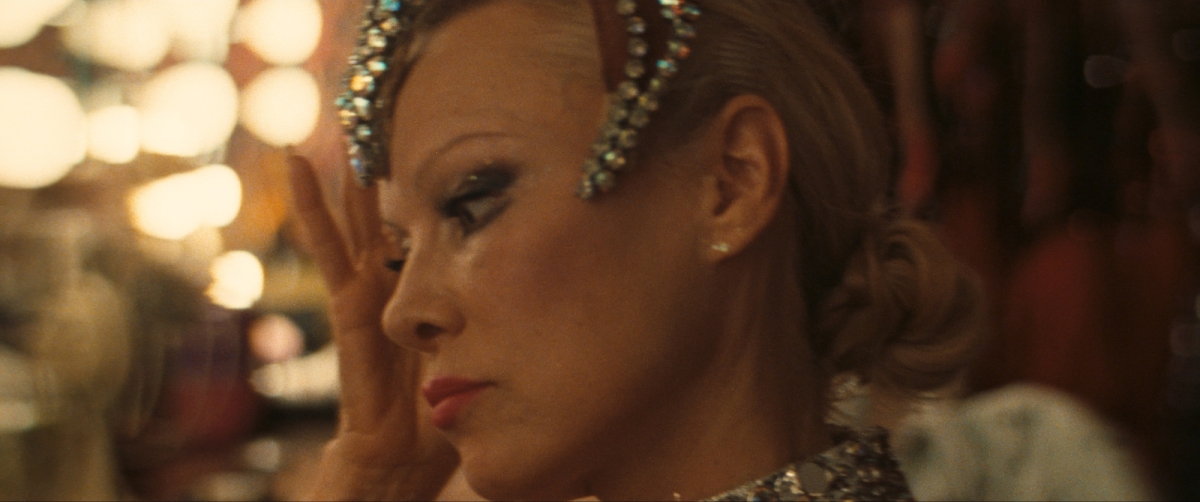
Pamela Anderson stars as Shelly in Gia Coppola's "The Last Showgirl."
Production on The Last Showgirl took place over 18 shooting days during January 2024, around Las Vegas, including the backstage areas and casino of the Rio Hotel, plus off-Strip exterior/interior locations. While it may have been tempting to enclose the storytelling within a tighter frame, such as 4:3 or 16:9, Durald Arkapaw shot The Last Showgirl in widescreen 2.39:1 aspect ratio.
Durald Arkapaw explains, "I'm always more interested in the width of an image than what's on the floor or what's above, and I think shooting widescreen really fitted the storytelling. I knew it would lend itself to scenes where we'd be shooting multiple dancers in a row or multiple characters in a group. Of course, Las Vegas is a tall cityscape, but you can still showcase height when you shoot widescreen with your lens choice and having the camera low and tilting up."
Working on her camera package with Panavision, Woodland Hills, Durald Arkapaw selected a workhorse ARRIFLEX 416 16mm camera for the shoot, but was scrupulous when it came to selecting lenses. This saw her working closely with Panavision lens guru Dan Sasaki on a set of specially-tuned Anamorphic optics to deliver what she wanted.
"I am really particular about how lenses perform and resolve, and there simply weren't any lenses that I automatically loved for shooting our leads in widescreen on 16mm film. Actually, the choices are almost non-existent.
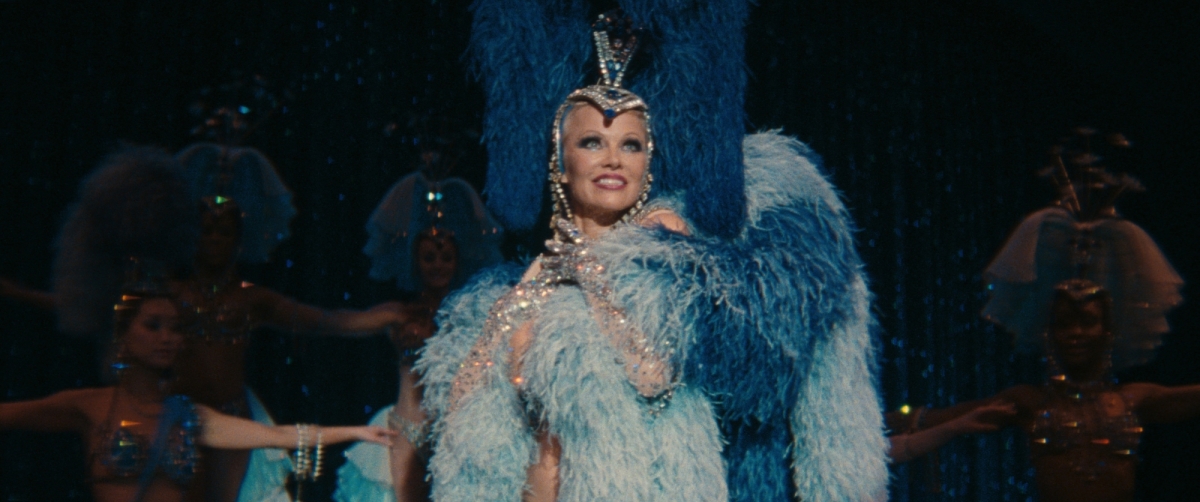
Pamela Anderson stars as Shelly in Gia Coppola's "The Last Showgirl."
"As Shelly was the eye of this story, and to depict her view of the world, I was looking for my 16mm lenses to have shallow depth-of-field and accentuated field-curvature. These requirements led to Dan making a set of bespoke Anamorphics to shoot in Super 16mm. I did two rounds of testing with Panavision and I think where we landed was really lovely."
Durald Arkapaw shot The Last Showgirl entirely on KODAK VISION3 500T Color Negative Film 7219 16mm film, pulled one stop in the lab at Fotokem. In combination with the lenses, pull-processing had the effect of lowering contrast, softening the color saturation of the filmed images and the shadows overall. Film processing, dailies and scanning were supervised by dailies colorist Jon Rocke, with senior finishing colorist Kostas Theodosiou later completing the final grade.
"I like grain and on 16mm the 500T delivers a ton of texture," says Durald Arkapaw. "I could have shot the exteriors using KODAK daylight stocks, but the grain would have been tighter and the overall texture would have appeared different. Gia and I liked the consistent look of the 500T on the day/night exteriors/interiors, and having one stock made things much more straightforward logistically during production."
Durald Arkapaw operated the camera throughout the production, mainly working handheld apart from a small number of scenes that employed a jib arm to swirl the camera around and takes from the dolly for Shelly's grand-finale performance.
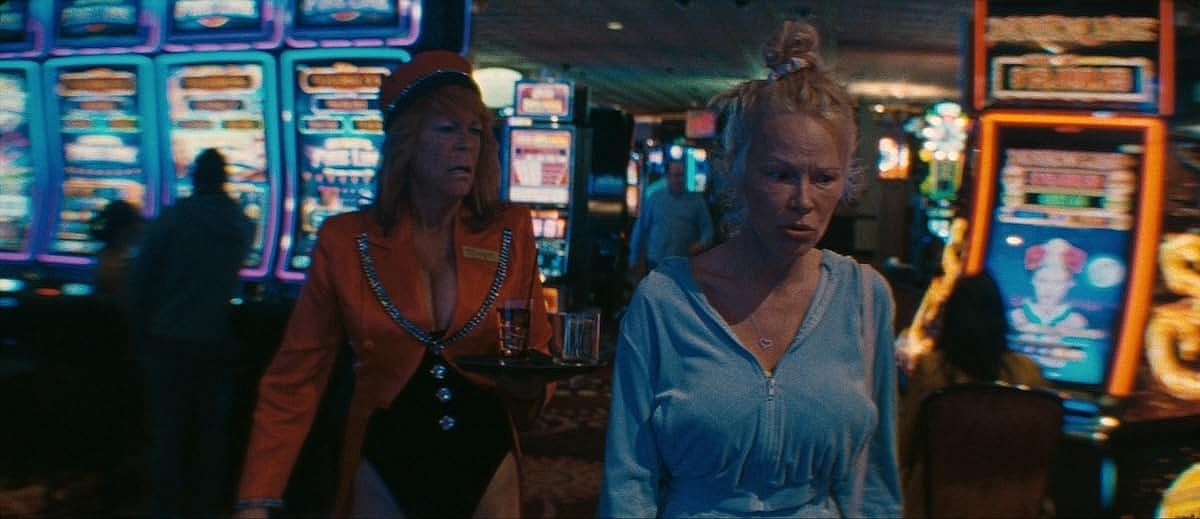
Jamie Lee Curtis and Pamela Anderson in "The Last Showgirl."
Ethan McDonald was the focus puller, with Miguel Benavides working as the key grip, and Brian Bartolini ICLS as the chief lighting technician/gaffer. Durald Arkapaw also brought on her AD Jason Lombardo, with whom she works on commercials, to manage the logistics, scheduling and overall flow of the production.
"I've operated throughout my career and appreciate being the type of DP where I have my eye to the eyepiece, composing the image through the lens and lighting from camera,” she says. “As far back as I can recall, right to my film school days, I have operated handheld, following characters around, because that gives you the best sense of your story through the eye of the protagonist.
"On a flowing, character-driven piece like this, with characters that we're really trying to connect to, especially Shelly and her internal pain, I didn't really see any other choice than shooting handheld. Also, for Pamela, who was returning to acting, I think it was comforting for me to be in close proximity to her, instead of just standing back in studio mode with the camera on the dolly."
With the tight shooting schedule, Durald Arkapaw was highly conscious of the need to move efficiently between setups and generally filmed the day exteriors in available, natural light, shaping the illumination around the direction of the sunshine. For the interiors, the lighting necessarily had to support executing shots quickly and efficiently.
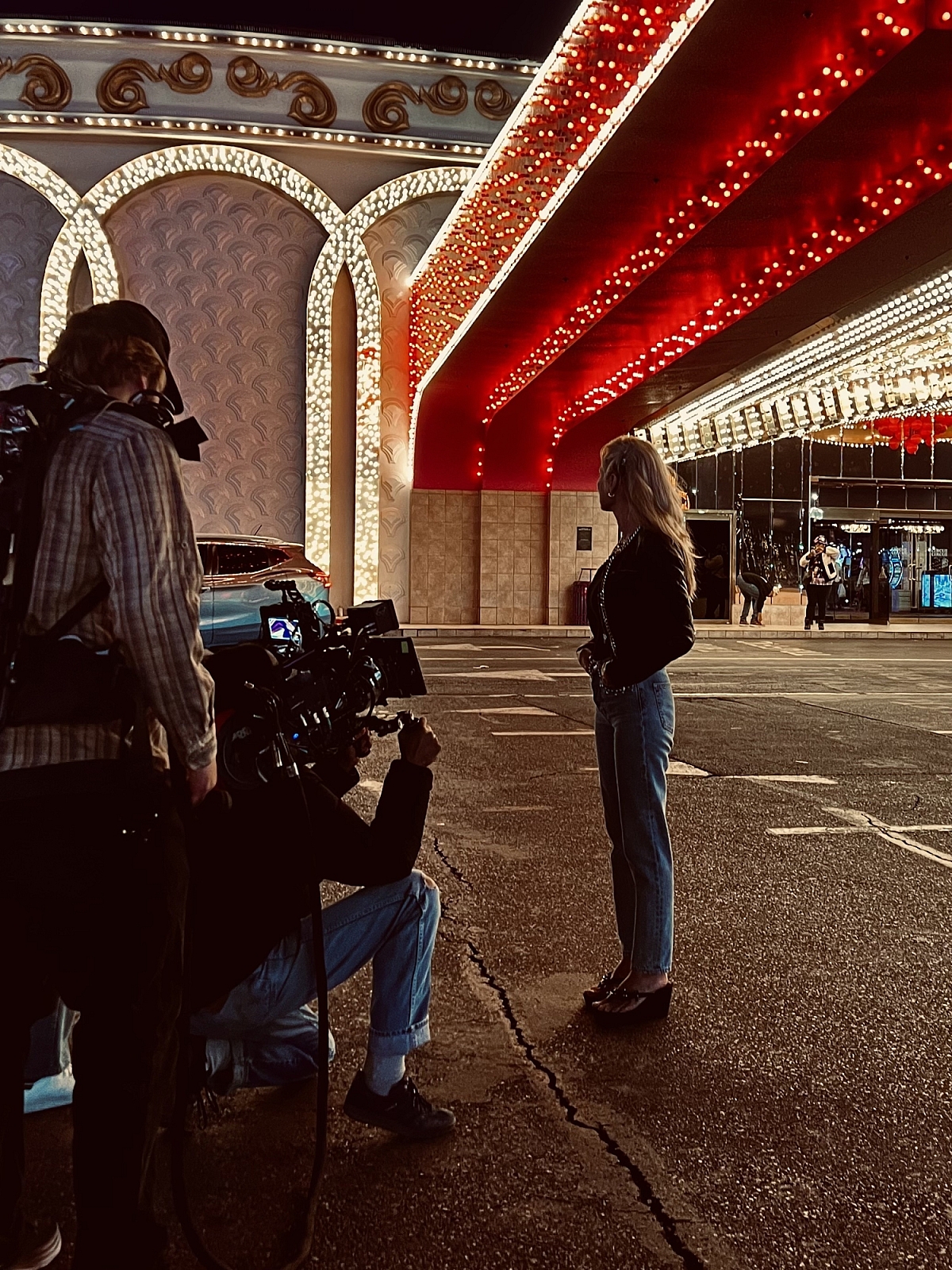
Behind-the-scenes photo from "The Last Showgirl."
"I had a very small crew and just didn't want to work in a cumbersome way," she recalls. "It was important to be able to move quickly and make changes on-the-fly, so our lighting package was minimal.
"Our casino, backstage and home interiors had a variety of built-in light sources, so we were able to use a lot of practicals and existing sources at our locations as key lights. I asked Brian to re-fit the dressing rooms with incandescent bulbs and then turned them on or off to taste. With minimal lighting, you can still make someone look beautiful and make a scene look great. For me it's more about taking away light than adding it.
"For Shelly's audition scene, we went with hard front light, using one of the follow-spots on the stage to pick her out from the darkness and make that moment look and feel embarrassing and uncomfortable for her."
After completing production on The Last Showgirl, Durald Arkapaw went straight into production on Sinners, shooting in IMAX using KODAK 65mm film, making the DP the first-ever female cinematographer to shoot a feature in that large format. But that's another story, coming soon.
Actor Dave Bautista and DP Autumn Durald Arkapaw ASC during production on "The Last Showgirl."
"I love shooting on film. It's my first preference," Durald Arkapaw remarks. "Filming with Gia on 16mm was lots of fun. The Last Showgirl will always be important to me because Gia and I set out to make a certain type of film, one where we had full control to carry out our vision. This allowed us to take big swings and make strong choices with our visuals.
"Apart from time and money, the challenge is always trying to get the director's vision in the can. But I was making this film with the trust of a great friend, and the result was personal to us, and I'm very proud of that. We got all the ethereal magic that comes with shooting on film. It has been really rewarding to see audiences and critics appreciating our choice to shoot film and Pamela's dazzling performance."